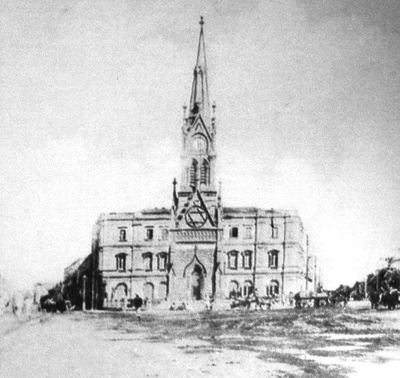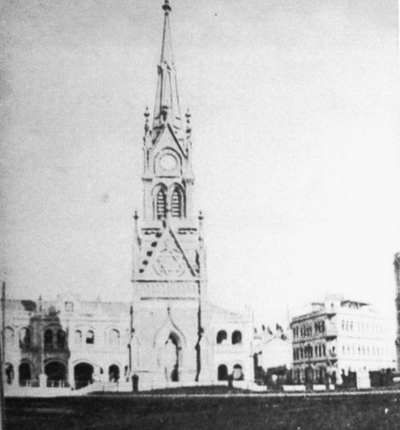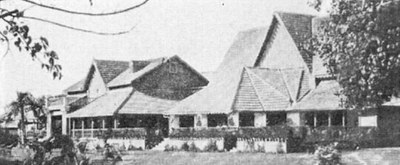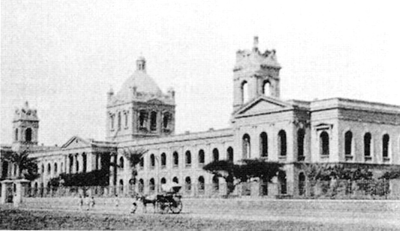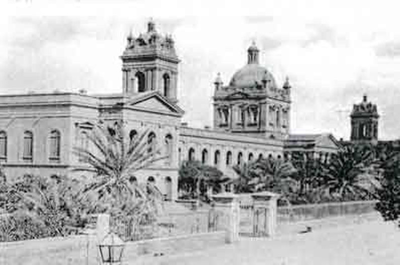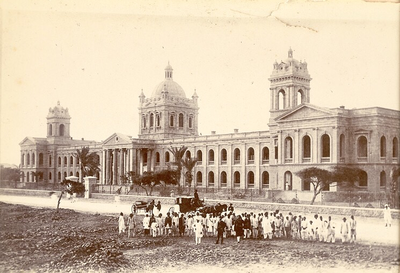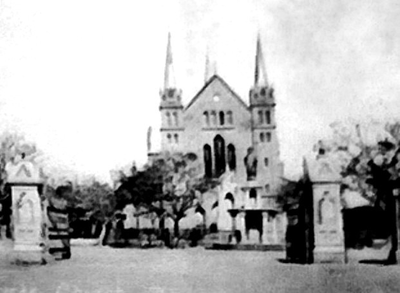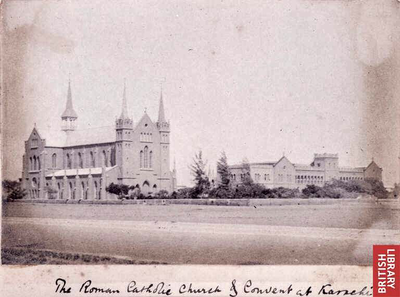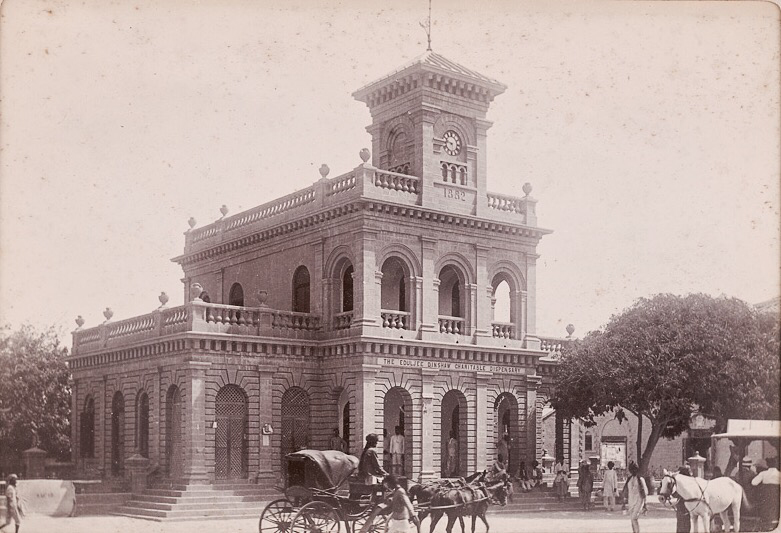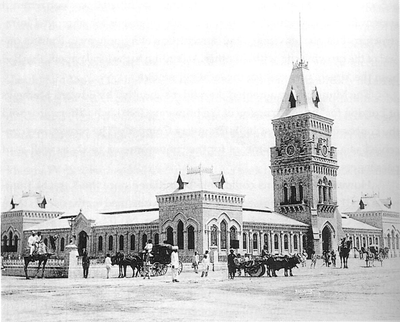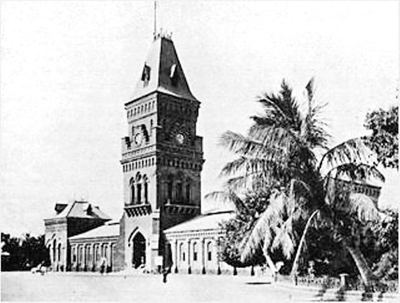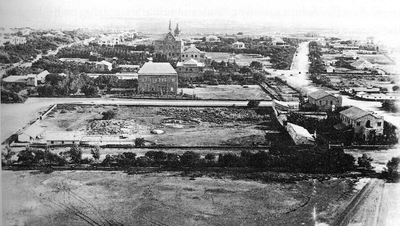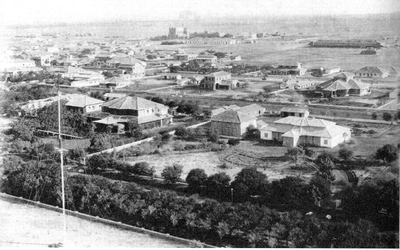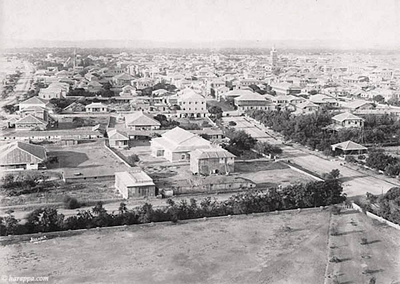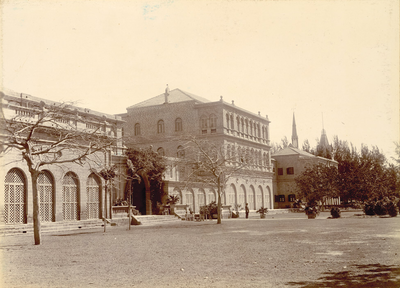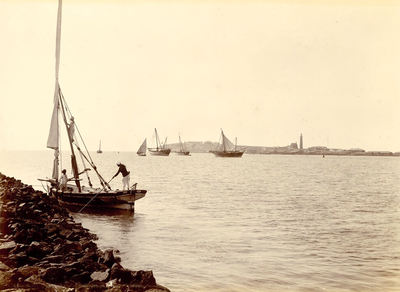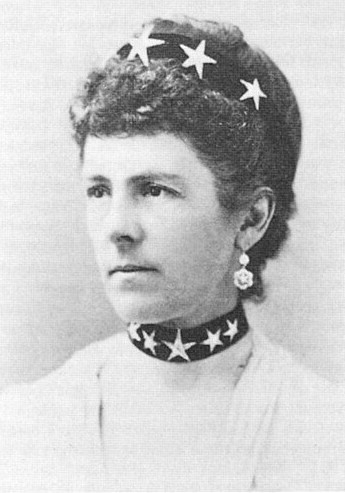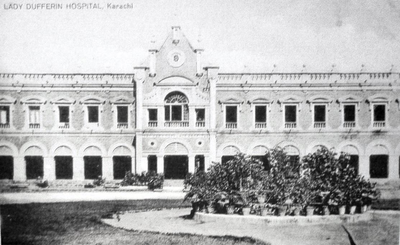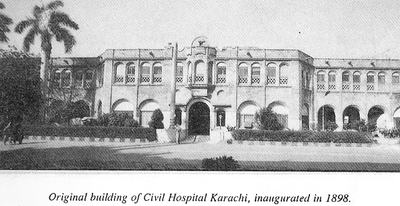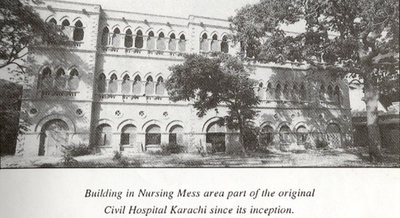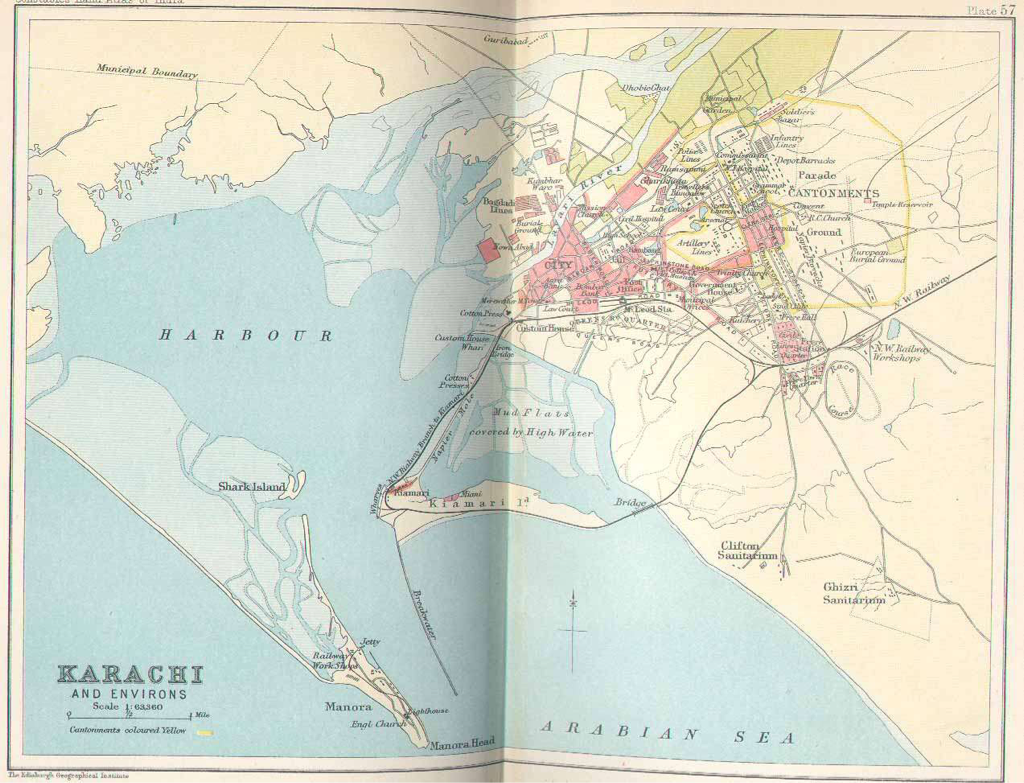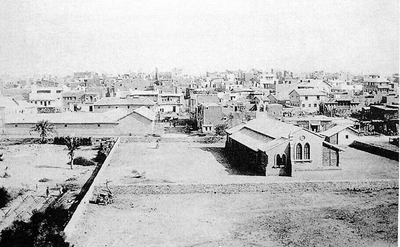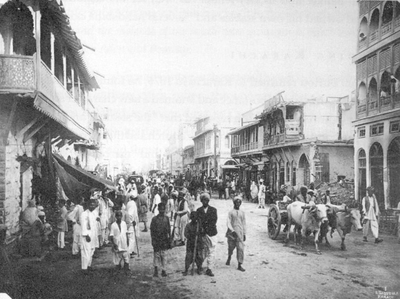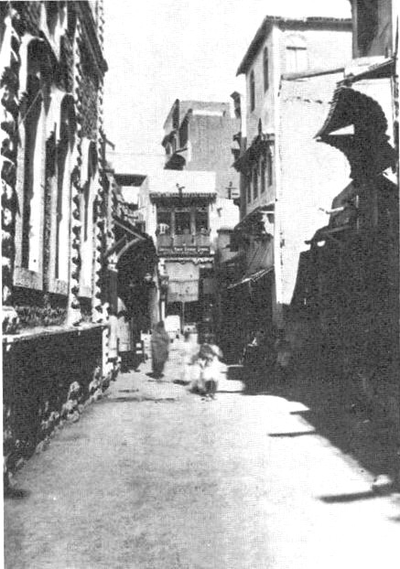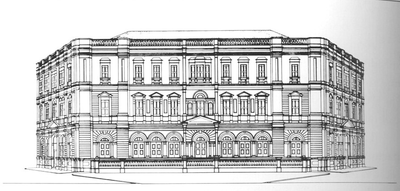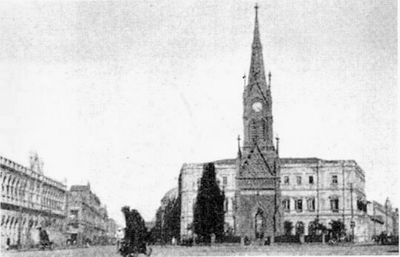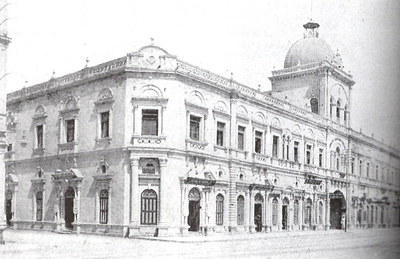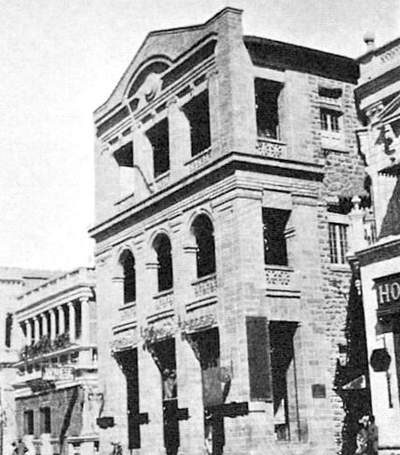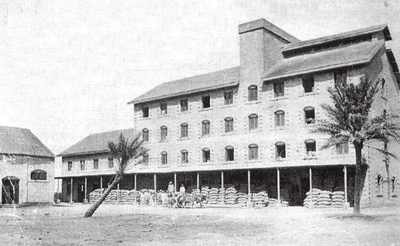THE 1880's
In 1882, the Merewether Pier was completed at the Karachi Port, which provided a great convenience to pilgrims for Mecca who no longer had to embark at Manora. The Karachi Port Trust was established in 1886 as a port authority to manage the affairs of the port and work on the construction of the East wharf was started in 1888.
|
There was a lack of recreational facilities in the city. The British developed the concept of gymkhanas or sports-houses which provided facilities for all sorts of sports and games for the colonial population in the sub-continent. The Karachi Gymkhana Club, located on Scandal Point (later Club) Road, was a large Tudor-style building, constructed in 1886.
The Duke of Connaught laid the foundation for the first public museum in the current Pakistani territory, built to honor the reign of Queen Victoria in 1887. Both these facilities granted more recreation facilities to the citizens of Karachi. |
The Sindh Arts College was established in the city in 1887 providing a world class education to the citizens of the city. It was inaugurated by the Governor of Bombay, Lord Reay on 17th January, 1887.
"Designed by James Strachan and considered this architect's greatest achievement, the college was built between 1887 and 1893. Named after the Sindhi philanthropist Dayaram Jethmal, whose two family members contributed towards its cost, the building was constructed in the neoclassical, or ‘Italian architectural style’. A considerable amount of money was spent on the interior of the college; the floors comprised mosaic tiles imported from Belgium and the eight-foot wide main staircase was fitted with ornamental cast-iron work from McFarlane & Company of Glasgow."
Courtesy: British Library www.bl.uk
"Designed by James Strachan and considered this architect's greatest achievement, the college was built between 1887 and 1893. Named after the Sindhi philanthropist Dayaram Jethmal, whose two family members contributed towards its cost, the building was constructed in the neoclassical, or ‘Italian architectural style’. A considerable amount of money was spent on the interior of the college; the floors comprised mosaic tiles imported from Belgium and the eight-foot wide main staircase was fitted with ornamental cast-iron work from McFarlane & Company of Glasgow."
Courtesy: British Library www.bl.uk
|
"St. Patrick's Cathedral, dating from 1881, was the last of the grand church buildings built by the British in Karachi. It was designed in an Indo-Gothic style by three members of the Society of Jesus, the pastors Father Wagner, Brother Kluver and Brother Iau, inspired by the cathedrals of medieval England. Money for the church was raised by Charles Napier, governor (1843-47) of Sindh, and his staff, together with funds from the Catholic community in Karachi. The church became the largest in Karachi, accommodating 1,500 worshippers."
Courtesy British Library: www.bl.uk The second picture here shows the St. Joseph's convent school in the background which was established in 1868. |
Karachi by 1889:
The Parsi Contribution
|
This charitable dispensary (located in present day Saddar near Empress Market) as built with funds provided by Edulji Dinshaw, a local Parsi gentleman who had risen from poverty to become the largest landowner in Karachi. Constructed in 1882, it was the first building in the city designed in the ‘Italianate’ style, influenced by the Italian Renaissance. It was one of three dispensaries in Karachi towards the end of the nineteenth century and provided treatment for over a hundred patients a day.
|
THE 1890's
The 1890's saw the emergence of the Punjab as the granary of India and Karachi was the region's principal outlet. This brought many business opportunities to Karachi and the population of the city expanded. Consequently, revenues of the city also increased and public works projects were undertaken on a grand scale. Boulton Market was built in 1883, and in 1890, the grand Empress Market was constructed to commemorate the Silver Jubilee of Queen Victoria's reign. This monumental structure with a clock tower was designed to compete with the Crawford Market of Bombay and was designed to be 12 feet higher. The market quickly gained a position in the city's center.
"The Empress Market was constructed between 1884 and 1889 and was named to commemorate Queen Victoria, Empress of India. It was designed by James Strachan, the foundations were completed by the English firm of A.J. Attfield, and the building constructed by the local firm of 'Mahoomed Niwan and Dulloo Khejoo'. The building was arranged around a courtyard, 130 ft by 100 ft, with four galleries each 46 ft wide. The galleries provided accommodation for 280 shops and stall keepers; at the time of its construction it was one of seven markets in Karachi."
Courtesy - British Library www.bl.uk
Courtesy - British Library www.bl.uk
|
Hospitals such as the Civil Hospital and the Lady Dufferin Hospital were also inaugurated. The Lady Dufferin hospital was found in 1894 through the effort of Lady Dufferin who took an avid interest in the healthcare of the citizens of Karachi
|
During colonial times, separate portions of the city were dominated by Europeans and the Natives of Karachi. The following pictures look towards the native sections of the city.
Businesses from the end of the 19th century
